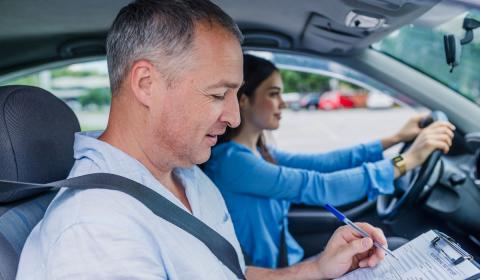Traffic news is coming… The General Directorate of Traffic (DGT) has presented what will be the Road Safety Strategy 2022-2030, a plan to reduce the accident rate that changes many things (including the approach) and announces many new ones like the B1, the new driver’s license for people over 16 years of age.
The undersecretary of the Ministry of the Interior, Isabel Goicoechea; the General Director of Traffic, Pere Navarro; the director of the National Road Safety Observatory, Álvaro Gómez Méndez; and the Minister of the Interior, Fernando Grande-Marlaska, have been some of those in charge of presenting the 2022-2030 Road Safety Strategy.
The driver is no longer the (only) culprit
This is a plan, which is articulated around nine strategic areas and 62 lines of action that will be specified with actions defined in biennial action strategies. The objective is to reduce fatalities in traffic accidents by half by 2030 with a new approach that makes all administrations responsible for reaching the goal.
“We have blamed driving for drinking, being distracted or going too fast, now we are going to try to ensure that human errors do not result in loss of life,” said Grande-Marlaska in her speech.
This idea justifies some of the measures contemplated in the plan for the next two years, such as the extension of the 2+1 road sections and the approval of a new catalog of signs (which will include the new ones for electric vehicles or the that warns of entering a Low Emissions Zone).
Driving license B1, for over 16 years
The new DGT strategy also has a marked environmental objective and is committed to promoting electric mobility. Just one day after Europe has banned the sale of diesel cars from 2035, the Minister of the Interior has announced the creation of a new driving license for people over 16 years of age and the promotion of driving tests with automatic cars.
The type B1 driving license is provided for in the European Driving License Directive, and will enable the use of motorized quadricycles with a maximum speed of more than 45 km/h (such as the Citroën AMI or the XEV Yoyo, in the photo above) . Today, in Spain these vehicles can only be driven with a B permit.
The B1 will enable people over 16 years of age to drive heavy quadricycles (homologated as L7e) with an engine with a speed of at least 60 km/h and a power of less than 20 CV, ideal for urban and suburban driving.
“This measure is intended to promote electric vehicles and increase mobility options in areas with lower population density,” said Grande-Marlaska.
More exams with automatic cars
If the DGT (and Europe) want more and more Spaniards to drive electric cars, they must teach them how to drive them. That is why Traffic will promote driving tests with automatic cars, which currently represent only 2% of the tests.
The suppression of code 78, which indicates that the driver has passed the tests with a vehicle equipped with an automatic transmission and that, therefore, he is only authorized to use this type of car, is a request that driving schools have been formulating for some time.
In addition, the first actions of the Road Safety Strategy 2022-2030 contemplate the review of the psychophysical tests and the deadlines for renewing the driving license (especially for older people).
Also the creation of a new title of Senior Technician in Safe and Sustainable Mobility; greater regulation of the use of Personal Mobility Vehicles (VMP); and enhances the use of the connected vehicle.












